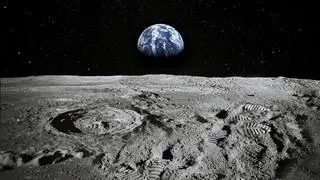The launch of the PSLV-C-23 rocket on Monday had to be held back by three minutes to avoid the possibility of collision with space debris. In October 2011 PSLV-C-18 was delayed by one minute for the same reason.
Debris problem The problem of space debris, recognised for years, is now assuming dangerous proportions. Imagine what will happen if a communication satellite is suddenly knocked down cold by a tiny component of some long-forgotten space craft!.
Mankind has so far launched some 5,000 satellites. American space body NASA estimates that there are some 500,000 pieces of debris in the space. Of these, about 22,000 (4 per cent) are at least 10-centimeters wide — big enough to be tracked. The rest are space flotsam, most of which are in that part of space known as Low Earth Orbit, between 160 km and 2,000 km above. And this number is growing. Two large objects collide and produce thousands of smaller ones. For instance, when a satellite that belonged to the company Iridium, collided with an old Russian satellite in 2009, it created 2,000 pieces of debris. A couple of years earlier, the Chinese added 3,000 pieces to the junk when they intentionally destroyed a satellite of theirs for testing an anti-satellite weapon.
Size criteria In space, the small size of an object does not lessen its potency. These objects travel extremely fast — some as fast as 28,000 km per hour. Travelling at that speed, Jules Verne could have gone around the world along the equator in less than two hours.
The European Space Agency says there are near-misses happening all the time. Every week, at least 10 objects come within 2 km of each other. In January 2010, the Agency had to do a ‘collision avoidance manoeuvre’ to save a satellite from another object that came within a menacing distance of 50 metres. If they had not been able to track that object, the satellite could have been lost. All this calls for space scavenging, which is now an evolving science. Several ideas are being tossed around. One is ‘snagging’ or capturing an unwanted object with a net or a harpoon or a robotic arm and moving it down to an altitude from where it will eventually re-enter the earth and burn itself up. Another idea is to move a satellite to safety even when it is still controllable. The Japanese are toying with the idea of an ‘electro-dynamic tether,’ or sending electric impulses to slow the satellite down, whereupon it will fall into the atmosphere and burn. There are many other ideas — all untested as of today — but basically the idea is to sweep large object away.
Serious issue However, there is little option when it comes to smaller space debris, one the scientists are still grappling with. The issue is so serious that the University of Maryland in the US has established a Centre for Orbital Debris Education and Research (CODER), to look into the technological, economic and legal issues of the debris problem.
“It has come to a point where everyone realises something has to be done,” says Marshall Kaplan, associate director of CODER.







Comments
Comments have to be in English, and in full sentences. They cannot be abusive or personal. Please abide by our community guidelines for posting your comments.
We have migrated to a new commenting platform. If you are already a registered user of TheHindu Businessline and logged in, you may continue to engage with our articles. If you do not have an account please register and login to post comments. Users can access their older comments by logging into their accounts on Vuukle.